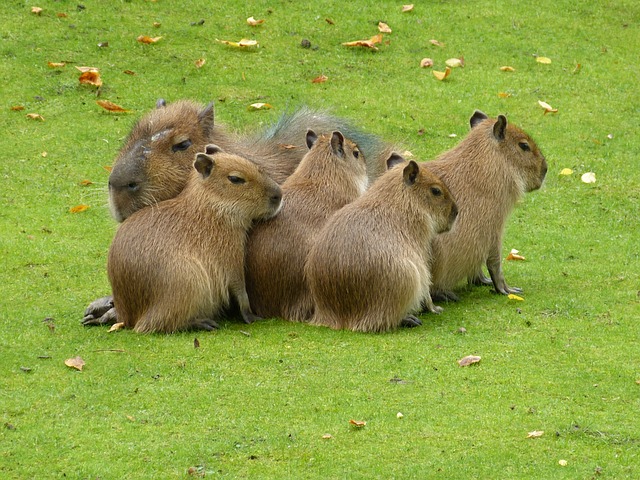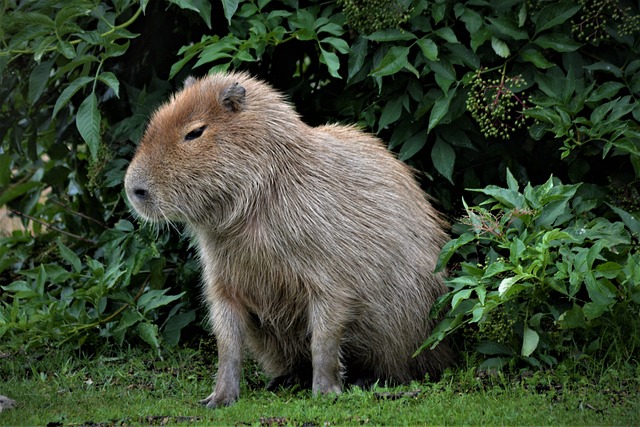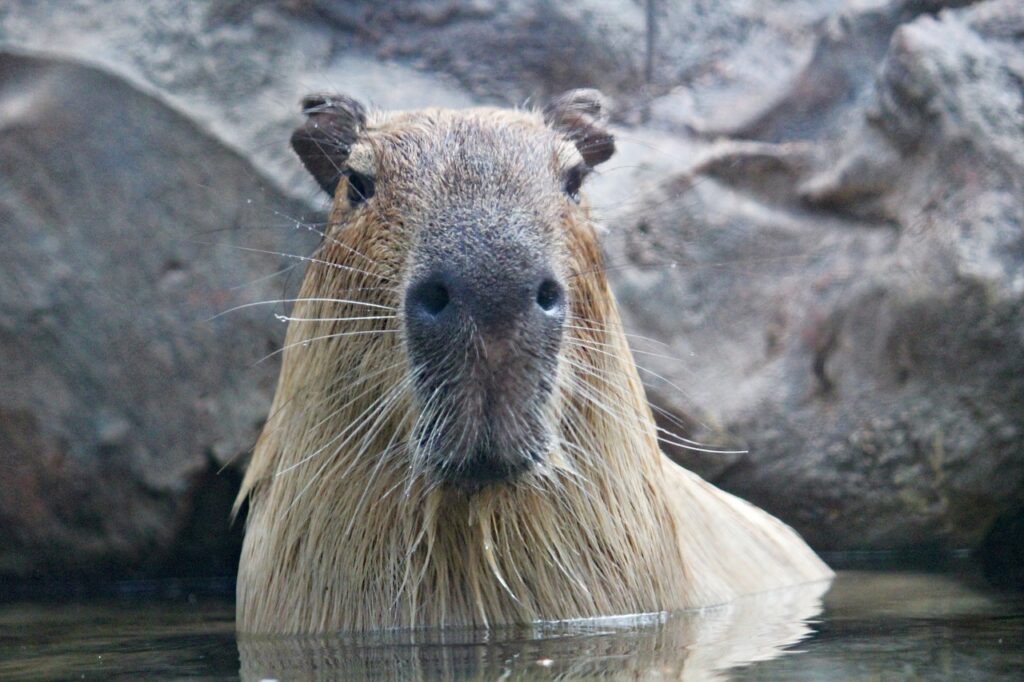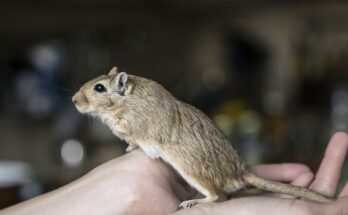Introduction:
A capybara petting zoo is a type of zoo with the largest rodents in the world, capybaras. These cute and friendly animals come from South America and are known for their friendly and docile nature. At the Capybara Petting Zoo in Houston, visitors can get up close and personal with these animals and learn more about their unique characteristics and behaviors.
Behaviour:
Capybaras are semi-aquatic, meaning they are adapted to life both in water and on land. Your activity plans vary during the year depending on several factors. Predation pressure, food availability, and habitat type all play a role in determining whether capybaras are diurnal (active during the day) or nocturnal (active at night). The same factors also determine group size, which can vary from one or two animals to a large herd of up to thirty animals. They generally occur in small groups of about ten individuals, consisting of a dominant male, one or more females, subordinate males, and young.
Due to their ability to adapt to the seasons, capybaras’ diet varies from grasses and aquatic plants during the rainy season to carrots, pumpkins, and melons during the dry season when they spend more time on land. Using their ever-growing front teeth, they cut the plants and chew them thoroughly to break down all the cellulose, making digestion easier. Although they are not ruminants like cows or giraffes, they cough up undigested food to chew again, which helps them eat such tough plant material.
Reproduction and breeding:
Capybaras nest in the wild year-round, with activity peaking at the start of the rainy season. They are polygynous (several females for one male) to promiscuous, with dominant males attempting to monopolize mating activity, which can be nearly impossible in larger groups. The males follow the females when they come into heat but are often chased away by the dominant male who then takes over and mates with the female.
The cubs are born early socially (can take care of themselves) and can walk shortly after birth. Baby capybaras begin grazing within a week of birth, but are not fully weaned until they are three to four months old. They stay with their birth group and the other cubs are protected from predators from the whole group until they are one year old.

conservation:
The capybara is not currently classified as an endangered species, although it is threatened by deforestation, habitat destruction, and illegal poaching. This species is considered locally common and widespread, but uncommon or rare in populated areas of the Amazon. They are hunted for their hair and meat, which also creates some protective pressure.
Fun facts:
•The capybara is the largest rodent in the world.
•Although vocalization is very important to capybara groups, scientists have yet to figure out the purpose of all the sounds they produce.
•Capybaras eat their own feces, usually the next morning, to absorb protein-rich microbes in the gastrointestinal tract and help break down cellulosic material. Fun facts
•The capybara is the largest rodent in the world.
•Although vocalization is very important to capybara groups, scientists have yet to figure out the purpose of all the sounds they produce.
•Capybaras eat their own feces, usually the next morning, to absorb protein-rich microbes in the gastrointestinal tract and help break down cellulosic material.

POPULATION STATUS:
Not threatened
AZA PROGRAM:
Species Survival Plan.
SCOPE:
South and Central America, east of the Andes
LIVING ENVIRONMENT:
Grassy, marshy areas surrounding freshwater ponds, swamps and lakes.
DESCRIPTION;
A barrel-shaped rodent with long, shaggy, light brown hair, webbed feet, and no tail. The eyes, ears, and nose are all on top of the head.
MEDIUM SIZE:
Height: 3 to 4 feet
Weight: 60 to 170 pounds, depending on gender
LIFE SPAN:
In the wild: 10 years
Eating patterns:
Grass and water plants
PREGNANCY:
5 to 6 months
Litter size:
Five to eight puppies
sexual maturity:
15 months old
predatory fish:
Jaguars, mountain lions, caimans, snakes, birds of prey and people

capybara paradise:
The park is known in Japan as the “capybara paradise”:
About 20 capybaras live in a large field. Visitors can enter the field at any time, touch it, and even feed it by purchasing the feed. They are originally gentle and are now very familiar to the people of the cinema park. So you don’t have to be afraid.
Please approach them slowly so as not to scare them. Please scratch them gently. If that doesn’t go well, the capybara food sold can help. Capybara comes to you and asks you to eat. She and Capybara will soon become good friends.
Scratch to delight capybara:
In the summer, capybaras can be seen eating their favorite fruit, watermelon. They are usually very calm, but watermelon upsets them. You can see her wild side then.
In August you can experience the “watermelon season of the capybara”. Sometimes you see special versions of it, like “Big Watermelon” and “Ice Watermelon”.
Sure, this animal looks like a tailless beaver or a strange-looking guinea pig, but it’s actually a capybara: the largest rodent in the world!
The Capybara petting zoo, affectionately known as “capybara”, is native to Central and South America. Their long, rodent-like teeth are perfect for grazing on grass and aquatic plants. Due to dry skin, they require a swimming hole as part of their lifestyle to stay healthy. Water is a source of life for these animals. Not only do they swim to stay healthy, but they also use the water as a mating ground and hiding place for predators! A capybara can stay underwater for up to five minutes at a time to hide from predators. Like a hippopotamus, a cap is eyes, nose, and ears are located in the upper part of the head. This makes it easy to hide most of your body underwater while being aware of your surroundings.

Did you know?
Capybara petting zoo are highly intelligent and trainable animals. In Suriname, a blind man once used a capybara as an arthropod.
Embark on an up-close adventure with these endearing and clever capybara brothers. Immerse yourself in their habitat or venture behind the scenes to unravel the mysteries of this remarkable species.
FAQS:
For example, capybaras are banned as pets in California and Georgia. However, they are legal to possess in Texas, Pennsylvania, and New York. Even if a state allows it, some cities may not. Capybaras are considered illegal pets in the five boroughs of New York City.
CAPYBARA LAND is the Petting Zoo for Capybaras. Our adorable capybaras are so friendly to you. You must enjoy having fun and get relaxed to pet them. The admission is 1,600 JPY for adults and 1,400 JPY for children.
Capybara | Meet Our Animals | Plan Your Visit | Chester Zoo.
Many first-time tasters say it tastes like salty pork, but it’s difficult to know how the unadulterated meat tastes, as capybara is almost always dried, salted, and shredded. The prepared “fish” goes into everything from soup to casseroles to empanadas.
Despite their size, they’re actually very docile and are often kept as pets. In fact, they’re known for being one of the most friendly and social animals in the rodent family. One of the best things about capybaras is their love for water. They’re excellent swimmers and can often be found lounging in ponds and rivers.
Remember that, although they are cute, capybaras are still wild animals that are not used to human companionship. If a capybara does not have its nutritional, social, and environmental needs met, the animal’s well-being is at risk. Capybaras are trainable but cannot receive the same type of training as a dog.
They can have a lifespan of 8–10 years, but tend to live less than four years in the wild due to predation from big cats like the jaguars and pumas and non-mammalian predators like eagles and the caimans. The capybara is also the preferred prey of the green anaconda.
3.2 to 4.2 feet
Capybaras are the largest rodent species. An adult capybara weighs 60 to 174 pounds, depending on the sex. They measure 3.2 to 4.2 feet in length and measure 1.6 to 2 feet at shoulder height. The lesser capybara tends to be smaller than the greater capybara. See more




